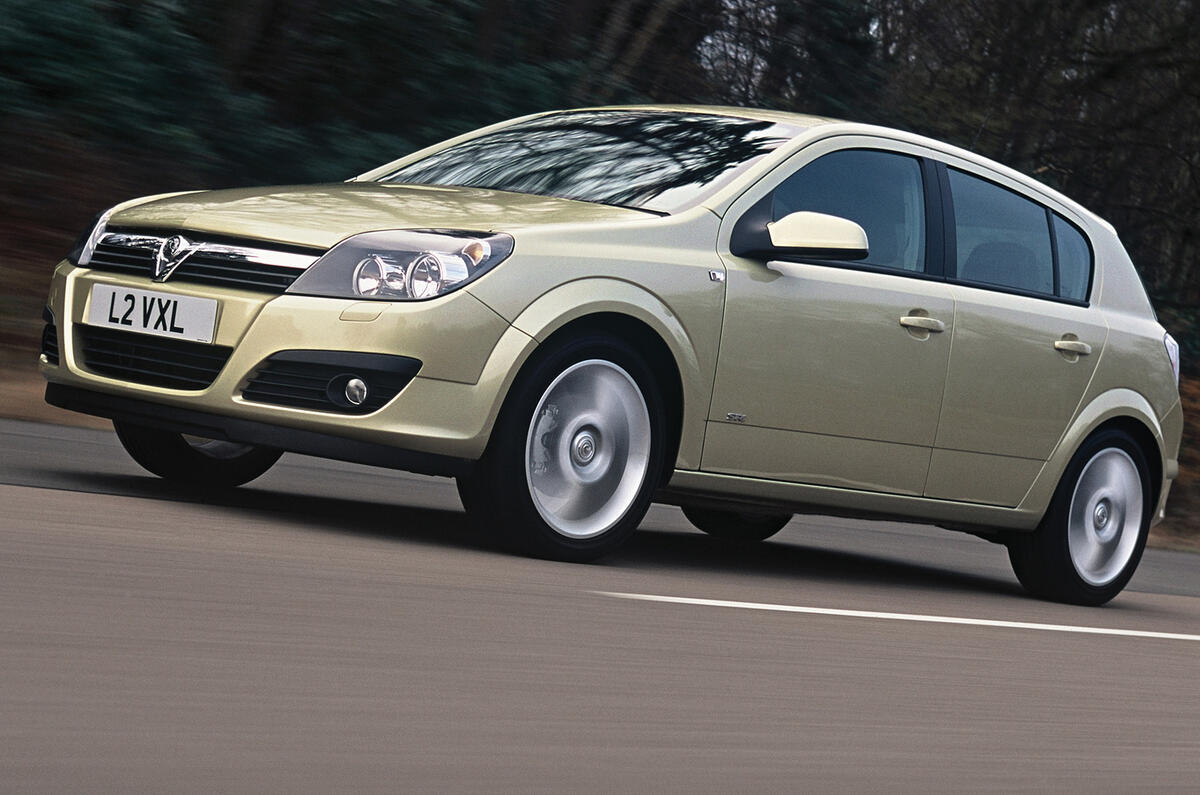Unaccountably, it took Ford nearly four years to produce a fast, affordable Focus. Vauxhall’s not about to fall into that trap. Here we are at the launch of the new Astra, driving the 168bhp turbocharged SRi that’s set to go on sale with the cooking models on 1 May. What’s more, there’s a faster 197bhp Turbo to come this summer and the promise of a 220bhp (but possibly 240bhp) superhatch VXR in spring ’05.
Until then, the Turbo will do just fine, thank you. Visually, the new Astra’s a knockout. The distinctive (at least until the new model gains ubiquity) low-slung, wheels-filling-guards looks really grab your attention. Just as well, for the SRi doesn’t bring a lot of extra frills to the party: sports suspension, xenon headlights and fog lights, a few black mouldings and 215/45 rubber on 17-inch wheels.
The test car came on wonderfully spindly 18s – at just £200 for four alloys, certain to be snapped up – to add something extra to what are only minor cosmetic changes. With two harder versions in the pipeline, I suppose the £17,195 SRi can afford to be restrained. Only in profile is the Astra’s excessive front overhang – in part a product of meeting future pedestrian crash requirements – apparent. And on the 18s, the 264mm rear discs look puny between the spokes, an all-too-common problem with today’s apparently inexorable increase in wheel sizes.
Interior performance add-ons follow the usual pattern: leather wheel, sports seats, alloy-look pedals and instrument surrounds, all applied to the Astra’s attractive, solid feeling cabin. The seats are firm, and it takes a moment or two to find all the levers required to adjust seat cushion height and, separately, cushion angle and steering wheel.
There’s no aural excitement here. Vauxhall’s familiar low-pressure (max boost 1.8 bar) 2.0-litre turbo is more about mid-range torque than peaky power or a gutsy exhaust note. It offers 184lb ft between 1950-4000rpm and a maximum 168bhp at 5200rpm. Vauxhall knows the Astra’s 1310kg and 168bhp produces a modest 128bhp per tonne power-to-weight ratio – the £16,850 Ford Focus ST170 gives 141 – and will sell the SRi as a refined, quickish hatchback, rather than a Honda Civic Type-R rival.
Accept this role and the SRi makes sense. The test car, an Opel Turbo – as close as we could get to the real SRi, and not pictured here – also came with GM’s much-vaunted Continuous Damping Control (CDC), a £440 option. No other car in the class offers adaptive damping and, because it’s tied in to numerous other electronic systems, it adjusts damper rates in milliseconds based on the output from a raft of sensors. Push the Sport button and, the engineers claim, stability is improved, pitch and roll decreased, steering weight increased and throttle response heightened.
We’ll ignore Sport for the moment. Helped by an all-new six-speed ’box – the new Astra is the M32’s first application – the drivetrain feels refined, isolating the driver from noise and vibration. The engine’s tractable – happy to pull from 1000rpm in high gears on a light throttle. But you need to keep the crankshaft above 2000rpm for sparkling performance. Boost is clean and linear through a long, flat band of power to a smooth 6000rpm, before the power drops off in an inverse ratio to the increase in engine thrash over the last 500rpm to the red line.

























Add your comment